You know what was fun? May 25. Or, if you prefer, Draft Decision Day, which will surely be a commonplace proper noun in a year or two. Hanging back as the impact NBA entry decisions rolled in Wednesday felt like a much chiller version of European football's transfer deadline hysteria: less insane, but still action-packed.
And there are clear opportunities for growth. Case in point: On Thursday afternoon, the timing of Purdue forward Caleb Swanigan's announcement -- not his decision, but what time he would announce his decision -- was briefly a piece of anonymously sourced breaking news on Twitter. Seriously! According to multiple sources, Draft Decision Day is the next big thing. What else are we going to do in May? A giant countdown clock can't be far off.
This bright future was made possible, of course, by the NCAA's new draft entry rules, which not only gave players much more time to decide but also gave them the ability to attend the NBA draft combine and work out with teams without triggering the eligibility ban hammer. With one such deadline in the books, it turns out that allowing players to gather direct feedback from prospective employers before making a life-altering decision is a good thing. Stunning stuff.
Of course, the new deadline also made the span between April's original Way-Too-Early Top 25 and this update feel much more fluid than in recent years. Add transfers, recruiting decisions and good, old-fashioned goofball oversights (cough, Gonzaga, cough) and there's plenty of new stuff to chew on here.
Of course, a few spots have held firm. Like, say, the ...

1. Duke Blue Devils
Lost in the #fishingrodemojigate hilarity of last week -- when Duke basketball's official Twitter account posted (and quickly deleted) a not-so-indirect reference to Kentucky coach John Calipari after top-20 prospect Marques Bolden chose the Blue Devils over UK -- was a tweet that followed shortly thereafter. It contained no confrontational overtones or subliminal shots. It was, instead, just a photo of some shoes. "Freshman kicks are in," @DukeBluePlanet wrote, showing off a stack of classic orange Nike boxes (and a few black LeBron VIIIs) atop a cart in the team's locker room. "We need a bigger cart next time."


2. Villanova Wildcats
Villanova fans, breathe deep: Josh Hart is back. Ah, who are we kidding? The Wildcats' just won the national title in insanely thrilling, cathartic fashion; we can only assume the past two months have been one extended deep breath of Sting-level tantric proportions. Still, Nova's shot at repeating as the national champs -- even without lynchpin seniors Ryan Arcidiacono and Daniel Ochefu -- improved dramatically when Hart announced his return on May 24. Despite his bright-lights performance in the NCAA tournament, the importance of Hart's contribution to the Wildcats all season long was never fully appreciated; he was not only an efficient scorer but a positionally flexible defender whose rebounding made Kris Jenkins' outside-in style work. Add up Hart's return, the roster he returned to, and the trajectory of Jay Wright's program in the past four years, and the output feels obvious: It would be naive to consider the Wildcats anything but a serious threat to repeat in 2016-17.

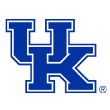
3. Kentucky Wildcats
Don't shed too many tears for Calipari. As crazy good as Duke's incoming class is -- and as funny as the whole Internet beef between Kentucky and Blue Devils has been -- it's worth noting, lest we forget, that ESPN's recruiting analysts still think Kentucky's class is better. (Duke ranks No. 2.) Which is incredibly and entirely unsurprising. Calipari, even without Bolden, still has four top-20 players of his own, and five five-star guys overall, arriving this summer. Forward Bam Adebayo and guards De'Aaron Fox and Malik Monk all look like immediate all-SEC-level players. The difference between Duke's consensus No. 1 spot and UK lies in the comparison between what the Blue Devils kept and what Kentucky lost: Jamal Murray and Tyler Ulis (arguably the nation's one-two backcourt), Alex Poythress and, most surprisingly, Marcus Lee, who took his name out of the draft on May 25 only to immediately announce his intentions to transfer. Fortunately, Kentucky tends to be pretty good at this whole "replacing NBA draft picks with more NBA draft picks" thing, in case you hadn't heard.


4. Kansas Jayhawks
Kansas, to almost no one's shock, landed No. 2 overall prospect Josh Jackson this spring. It is tempting to say Jackson is just what the doctor ordered, given the departures of senior stalwart Perry Ellis, junior star Wayne Selden, and even little-used freshman reserve (but high-upside prospect) Cheick Diallo to the NBA draft. Then again, KU still has that Frank Mason/Devonte' Graham backcourt, a deep stable of emerging and/or established role players, already-hyped freshmen, Bill Self on the sideline, and 12 Big 12 titles on the go. The Jayhawks landing Jackson was more like a perfectly healthy patient who already abstains from red meat and sugar informing the family physician of their new triathlon hobby. The doctor isn't ordering anything.

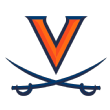
5. Virginia Cavaliers
If you're looking for draft-related intrigue, look elsewhere. (Other than the off-chance Malcolm Brogdon might sneak into the first round and fulfill his destiny as the San Antonio Spurs' latest personnel miracle, of course. Make it happen, R.C.!) Virginia's next roster has been more or less set since their 2015-16 season ended in March's Elite Eight heartbreak. As we wrote in April, Cavaliers coach Tony Bennett will not only rely on his customary corps of ever-improving veterans. The architect of three straight top-two seeds will also, for the first time, mix in a top-10 recruiting class exclusively stocked with top-100 talents -- plus elite Memphis transfer Austin Nichols. That sound you just heard was the rest of the ACC shuddering.

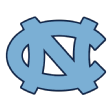
6. North Carolina Tar Heels
"Sting" is too gentle a word to describe the pain the Tar Heels and their fans suffered in April. Kris Jenkins' title-winning buzzer-beating was more of a basketball take on of those gory melee animations in the new "Doom." That does more than sting. Bad as it was, though, it has been all good news since. In late April, the NCAA (conspicuously and bafflingly) removed all mention of the men's basketball program from its investigation into decades of academic fraud. In May, forward Justin Jackson took his name out of the NBA draft. By now, not only does coach Roy Williams have another formidable Final Four contender, his team will be eligible to participate in said contending -- a state of affairs that seemed in doubt even a few weeks ago.


7. Oregon Ducks
With the possible exception of Villanova, no team had a better draft decision day than the Ducks. After weeks of rumblings that either Dillon Brooks or Tyler Dorsey (or both) would keep their names in, both instead announced their returns to Eugene within hours of each other May 25. Dana Altman already got still-blossoming forward Chris Boucher -- one of the best surprises in the sport a season ago -- another year of eligibility, and it's still possible (if not likely) that injured former Villanova transfer Dylan Ennis will be granted a sixth year of eligibility. Whatever the NCAA does with Ennis, though, Brooks and Dorsey mutually assured that Altman's team -- which swept the Pac-12 titles en route to a No. 1 seed -- will be every bit as fearsome next season.


8. Wisconsin Badgers
Despite minimal interest from the NBA and second-round-or-worse draft projections, forward Nigel Hayes was so determined to prove himself to the league he promised the Boston Celtics he'd take "5,000 shots a day" if they drafted him. (Which might be physically possible but doesn't seem physically sustainable.) Wisconsin was always insured against the possibility of Hayes' departure, though, for the simple fact that everyone else was always going to be back. With or without Hayes, guard Bronson Koenig and rising sophomore forward Ethan Happ -- who went from lost in November and crafty beyond his years in February -- would always lead a largely intact Big Ten title contender next season. Now that Hayes has dropped the whole 5,000-shots-a-day idea and announced his return, the Badgers are entirely intact. And very good.

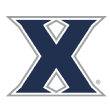
9. Xavier Musketeers
Before Villanova could conquer the NCAA tournament, it had to get out of the Big East alive, and for a minute there it looked as if Xavier might just end the Wildcats' three-year reign atop the league. The Musketeers fell short of that lofty ambition, but they (rightly) spent the majority of the season in the top 10 anyway. Now, with most key pieces back -- including Trevon Bluiett, who returned from his NBA exploration last week -- Chris Mack's team will (rightly) be setting 2016-17's goals even higher.


10. Michigan State Spartans
How good can Eron Harris be? Will Tum Tum Nairn evolve into more of an offensive threat? Is Gavin Schilling ready for big(ger) minutes? How quickly can Tom Izzo get one of his most lauded recruiting classes -- particularly Miles Bridges and Josh Langford, the two five-star additions on the wing -- up to speed? There are many more questions than answers for the Spartans in 2016-17, not least of which is how difficult it will be to replace the all-world senior performance of guard Denzel Valentine. But the talent is there, and so is Izzo, and mixing those ingredients tends to yield a potent brew.


11. Indiana Hoosiers
The biggest announcement of Indiana's offseason came long before May 25. For months, it seemed certain freshman center Thomas Bryant, a potential first-round pick, would be done after one. Not so much. Bryant's return was the cornerstone, an implicit guarantee of baseline success. From there, IU had two more decisions to resolve. By May 25, both were foregone conclusions: James Blackmon Jr., still recovering from injury and merely gathering NBA info, was always going to return, and Troy Williams was determined to stay in, long-shot projections be damned. Even so, Blackmon and Robert Johnson will let Tom Crean surround his elite big man with another ball-moving, pace-pushing perimeter, and the result should be as fun as ever.

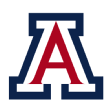
12. Arizona Wildcats
Call Arizona the (Sort Of) West Coast Michigan State. The Wildcats lost more than they retained this spring, and there are sweeping questions about their roster and rotations that can't be answered until their star-studded freshman class (led by Finland-born center Lauri Markannen, but replete with talented wings) gets to campus and integrates with guys like Alonzo Trier and Parker Jackson-Cartwright. Yet the sheer talent is plain, and you won't go broke betting on Sean Miller to optimize the resources at his disposal.

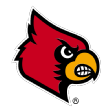
13. Louisville Cardinals
There is a noticeable gap between where Louisville ranked in April (No. 5) and where it ranks now, a gap that can be attributed in full to the departure of Chinanu Onuaku. Two months ago, Louisville's emerging two-way interior force and underhanded free throw maestro seemed more likely to return than leave, even if he dipped a test toe in the draft waters. Instead, Onuaku found those waters to his liking, leaving behind a team that will still be good -- just not as good as it might have been. (Meanwhile, the cloud of Louisville's strippers-in-dorms scandal looms. Which is a sentence we never thought we'd write. Yet here we are.)

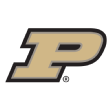
14. Purdue Boilermakers
Caleb Swanigan wasn't the only Boilermaker to improve the 2016-17 roster by stepping back from the NBA precipice. A day before the former McDonald's All-American's decision, forward Vince Edwards did the same. Of course, with all due respect to Edwards, Swanigan's was the decision most Purdue fans were sweating, not only because he's a real talent with a possible sophomore breakout on deck but because he seemed to be genuinely considering the professional plunge. His return is huge. Speaking of which, center Mag the Mighty Issac Haas will take over as the full-time starter in the lane. Also, don't sleep on graduate transfer Spike Albrecht, who, if nothing else, should help the Boilers unravel the mysteries of an arcane stratagem known as the "full-court press." This is a nice roster.


15. West Virginia Mountaineers
Two years into the "Press Virginia" revolution, Bob Huggins' system-driven team feels almost impervious to individual departures. That self-sustenance will undergo its most rigorous stress test yet next season, thanks to the somewhat unexpected loss of (projected second-rounder-at-best) forward Devin Williams to the NBA. Seniors Jaysean Paige and Jonathan Holton were big holes to fill already, but neither compares to the crater where Williams' brute interior force and super-productive rebounding once stood.


16. Gonzaga Bulldogs
Gonzaga went unforgivably unmentioned in April's list. How? In the hectic fun of the Final Four, amid the likely departures of Kyle Wiltjer and Domantas Sabonis, we failed to note that most easily overlooked of factors: transfers. The Bulldogs have two impact arrivals this season: guard Nigel Williams-Goss (Washington) and forward Jonathan Williams III (Missouri). They also have the No. 5-ranked freshman center (Zach Collins) in the 2016 class. To be fair, in April the future of man-mountain/center Przemek Karnowski was very much up in the air, both because Karnowski was considering the NBA (or overseas leagues) and because a return required a medical hardship waiver from the NCAA. The waiver arrived in mid-May; Karnowski announced his return on Twitter a week later. So, yeah. Gonzaga will be just fine. (Now: Can someone get the guy an acai bowl?)

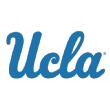
17. UCLA Bruins
Anti-Steve Alford banners flying over UCLA's campus, Alford giving part of his contract extension back as a gesture toward accountability -- it was a rough spring in Westwood. Missing the NCAA tournament will do that. Into this conflict comes top 2016 point guard Lonzo Ball, who, by all accounts, is so good he might singlehandedly broker a lasting UCLA peace. His highly ranked classmate, T.J. Leaf, should capably fill the Tony Parker spot next to center Thomas Welsh. But Ball is the headliner, the main source of Bruins-related bullishness. Time will tell.

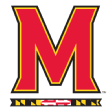
18. Maryland Terrapins
Is this ranking too high? Maybe. The rest of this list (probably beginning with UCLA, if not a few spots higher) is where most of the changes can be found, and where things feel totally wide open. Maryland-related assurance would be easier to conjure had Robert Carter not joined Diamond Stone among the Terrapins' NBA draft departures. (We initially just assumed Carter would be back, but his positional flexibility on both ends of the floor make him much more desirable in a post-Draymond Green world.) That said, feeling good about Maryland's 2016-17 campaign is much easier after the news -- which broke with little over an hour before the deadline -- that guard Melo Trimble would return. The idea of a fully healthy Trimble rediscovering his shot and operating in a more guard-oriented system is persuasive enough for now. Plus, not long after learning they were keeping Trimble, the Terrapins learned they were getting four-star recruit Justin Jackson.

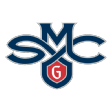
19. Saint Mary's Gaels
All five starters from Saint Mary's universally unforeseen 29-win season (which comprised a WCC title and a regular-season sweep of Gonzaga, the program's first since 1995) will take the court once more in November. There's no reason to think Dane Pineau & Co., who finished with the nation's third-highest effective field goal percentage, will get any less awesome at offense in the offseason.

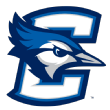
20. Creighton Bluejays
Remember Marcus Foster? After a sensational freshman season, Foster so enraged Kansas State coach Bruce Weber (or vice versa, or both) as a sophomore that the idea of a third year in Manhattan was laughable. So Foster transferred. He landed at Creighton. Now he's eligible. After the Bluejays' surprising success a season ago -- when they quietly flirted with the NCAA tournament bubble throughout Big East play -- the addition of Foster's scoring talent demands attention.

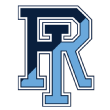
21. Rhode Island Rams
Wait: Rhode Island? Yes, Rhode Island. The Rams spent last season flying under the radar for reasons entirely outside coach Dan Hurley's control. Chief among them: On Nov. 14, in the first half of the team's season opener, star guard E.C. Matthews -- the team's high-volume lead scorer, and arguably its best defender, in a defense-fueled 23-win 2014-15 -- suffered a season-ending knee injury. Hassan Martin, Kuran Iverson and Jarvis Garrett would all take knocks later, but any momentum the Rams had coming into the season ended when Matthews left the floor. With Matthews (and everyone else) now healthy, Hurley's ascendant program can get back to the business of its first NCAA tournament berth since 1999.


22. Cincinnati Bearcats
There are teams whose characteristics carry over, regardless of personnel, year after year. Cincinnati is one of those teams. Mick Cronin's groups always rebound, defend and play with a punishing physical edge. The last time Cincy finished outside the top 25 in adjusted defensive efficiency was 2009-10. Offensive execution is a different story. Which is why having finishers like Troy Caupain and Gary Clark on the rolls is so important; the other stuff will take care of itself.

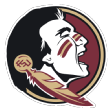
23. Florida State Seminoles
This time last year, Dwayne Bacon was the highest-touted incoming prospect in FSU basketball history. After a productive but tournament-bid-free freshman season, Bacon's decision to return for his sophomore season was huge -- particularly for a team that looked likely to lose fellow guard Xavier Rathan-Meyes. Then Rathan-Meyes came back, too. The upshot is a talented and athletic group buttressed by the arrival of another elite prospect (forward Jonathan Isaac) with some mildly awkward personnel overlap but oceans of untapped potential.


24. Connecticut Huskies
There's a reason the 2015-16 Huskies so flummoxed and frustrated their fans: The foundation for better ball was always plain to see, on the court and in the numbers, as UConn finished conference play with the stingiest per-possession defense in the American. (Yes, including SMU). That foundation remains. If Kevin Ollie's team defends (a fair expectation, considering Amida Brimah's ongoing residence in Storrs), squanders fewer late leads, and (or?) takes a few Jalen Adams-led steps on offense, 2016-17 should be considerably less fraught.


25. Syracuse Orange
After seeing his post-combine draft stock soar, Malachi Richardson decided to turn pro. Which made sense. It also left a huge hole in Jim Boeheim's backcourt. Michael Gbinije and Trevor Cooney graduated, so the Orange will instead rely on rising sophomore Franklin Howard, fifth-year transfer John Gillion, and incoming freshman Tyus Battle to pick up the slack. Challenging but doable, and the good news is that Tyler Lydon is a 3-and-D star in the making, Pascal Chukwu and Tyler Roberson will be brutal on the boards, and Boeheim's ability to mold size and length into a top-25 outfit is basically unparalleled.
Honorable mention: USC Trojans, Dayton Flyers, Iowa State Cyclones, Oklahoma Sooners, Texas A&M Aggies, Seton Hall Pirates, SMU Mustangs, San Diego State Aztecs, Virginia Tech Hokies
